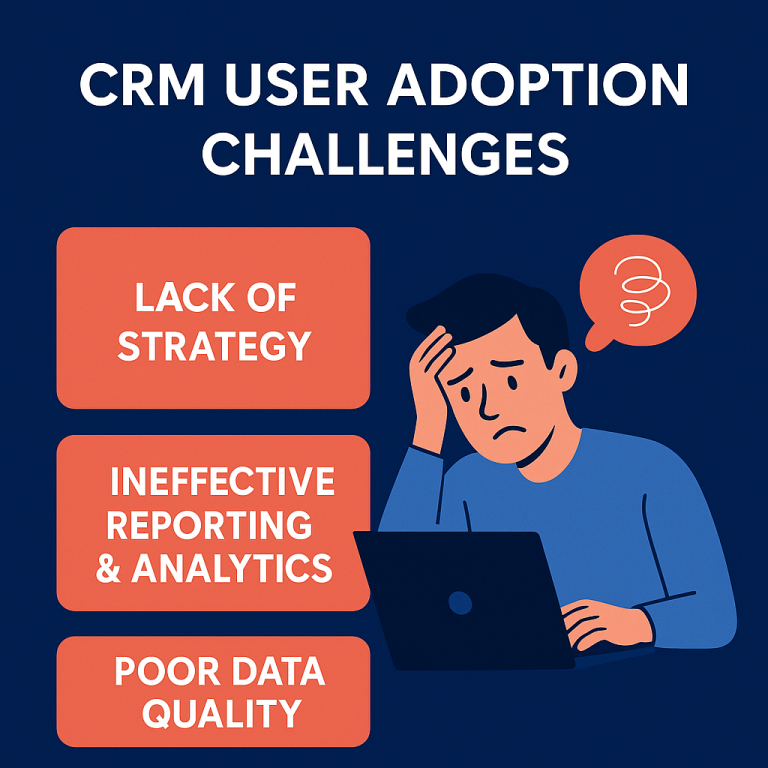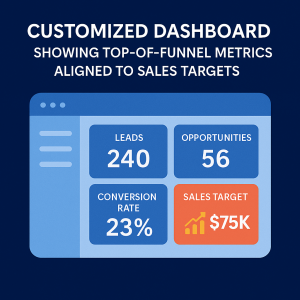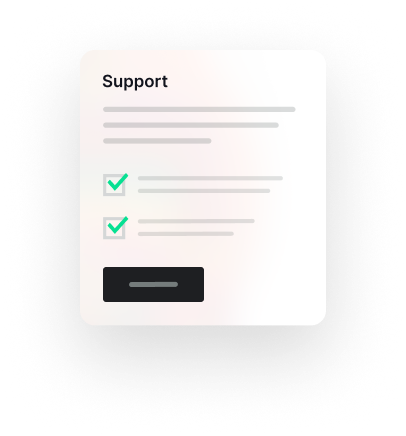CRM User Adoption: Why Your Team Isn’t Using It (and What to Do About It)

Your CRM Is Only as Powerful as the People Using It
CRM platforms promise streamlined processes, better data, and higher revenue, but only if your team actually uses them. If your CRM feels more like an expensive digital shelf than a sales enabler, you’re not alone.
Let’s dive into the real reasons why your team isn’t using the CRM and more importantly, how to turn things around.
Why CRM Adoption Fails: 4 Core Problems
- Low User Adoption
- Reps skip CRM updates or work outside the system
- It’s seen as admin work, not a helpful tool
Impact: Leads go cold, collaboration falters, and visibility disappears.
- Poor Data Quality
- Duplicate records, outdated contacts, missing fields
- CRM data decays by up to 30% every year
Impact: Misleading forecasts, wasted sales time, broken trust with clients.
- Lack of Strategy
- No clear blueprint or goals tied to CRM usage
- Teams don’t understand why it matters
Impact: Disconnected processes and missed commercial opportunities.
- Ineffective Reporting & Analytics
- Data is collected, but never used meaningfully
- Managers can’t act on insights they don’t have
Impact: Decisions made on gut feel instead of data.
How to Boost CRM Adoption and Get Back on Track
Step 1: Blueprint Your CRM Use
Create a CRM blueprint that maps user roles, workflows, and objectives. This gives structure and clarity to everyday use.
Example: Sales teams using only the pipeline view learned to manage leads more effectively after a blueprint documented lead stages, KPIs, and reporting rules.
Step 2: Deliver Targeted Training and Coaching
CRM training shouldn’t be a one-off PowerPoint session. Use:
- Role-specific coaching (sales, marketing, operations)
- Usage dashboards to monitor real adoption
- One-on-one coaching to tackle objections and habits
Pro Tip: Tailored training increased CRM usage by over 40% for clients who previously relied solely on email and spreadsheets.
Step 3: Improve Data Quality at the Source
A CRM filled with bad data is a CRM no one wants to use.
Implement:
- Automated contact enrichment
- Deduplication rules
- Mandatory fields with clear input standards
- Regular audits and cleanup workflows
Step 4: Make CRM the Single Source of Truth
Use integrations and automation to reduce manual effort:
- Sync emails, calls, and meetings automatically
- Use activity timelines to show full customer history
- Automate lead scoring to highlight high-priority contacts
CRM should guide next steps, not just log past actions.
Step 5: Align CRM with Business Goals

Link dashboards and reports to what matters:
- Conversion rates
- Pipeline velocity
- Forecast accuracy
- Customer retention
CRM Adoption Best Practices Checklist
✅ Create a role-specific blueprint
✅ Run ongoing training sessions
✅ Assign data ownership
✅ Clean and validate your CRM data regularly
✅ Automate wherever possible
✅ Customize reports and dashboards by business goals
✅ Get leadership buy-in to lead by example
Real Results: What Happens When CRM Adoption Works
- One company moved from pipeline-only use to full-funnel tracking, cutting lead response times by 40% and boosting conversion rates by 27%.
- Another used blueprint and training approaches to see a behavioral and cultural shift, with leadership using dashboards to steer performance proactively.
Conclusion: Your CRM Should Drive Growth, Not Frustration
If your CRM is underperforming, the issue likely isn’t the tool, it’s how people use it. By addressing adoption barriers, cleaning up your data, and tying usage to real business goals, your CRM becomes more than software. It becomes your commercial engine.
Need Help Fixing CRM Adoption?
At impulssum Digital, we help businesses unlock their CRM’s full potential with:
- Blueprint creation
- Training and onboarding
- Ongoing usage monitoring
- Strategic reporting
Or contact us directly:
Marc Andre Lein | +31 (0)6 40 98 12 85 | info@impulssum-digital.com | Visit our website
FAQs About CRM and CRM Users
Why don’t employees use our CRM?
They often see it as extra admin, don’t understand the benefits, or aren’t trained on how it supports their role.
How do you increase CRM adoption?
Start with clear expectations (blueprint), continuous training, visible leadership support, and tools that make using the CRM easier than not using it.
What’s the ROI of better CRM usage?
For every $1 spent on CRM, businesses can see an average return of $8.71. Companies that fully use CRM tools can increase revenue by up to 29%, and improve forecast accuracy by 32%.


